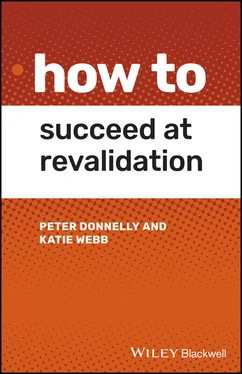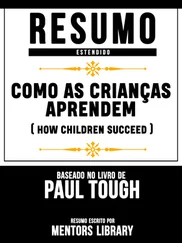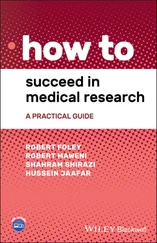1 Cover
2 Title Page
3 Copyright Page
4 Acknowledgments
5 Abbreviations
6 Chapter 1: Introduction Overview of the Book Background Challenges References
7 Chapter 2: Regulation in Health – A Brief HistoryIntroduction What is Regulation? Regulation in Health Professions The Nursing Profession Physiotherapy Medicine Current Health Regulators in the UK Chapter Summary References
8 Chapter 3: A History of the Current FrameworkIntroduction The Establishment of the National Health Service The Royal Commission on Medical Education (1965–1968) The Profession's Relationship with the GMC Changing Public Expectations The UK Political Landscape 1980–1990 Case Drivers for Change Good Doctors: Safer Patients The Darzi Report The UK Revalidation Programme Board The Responsible Officer Regulations Revalidation is Launched The King's Fund 2013 The Pearson Review UK Medical Revalidation Evaluation coLLAboration (UMbRELLA) Study Chapter Summary References
9 Chapter 4: Revalidation – The Role of the Appraiser, Responsible Officer and Designated BodiesIntroduction The Good Medical Practice The GMC Domains The Appraiser The Role of the Responsible Officer (RO) The Designated Body (DB) Requirements for Doctors in Training Chapter Summary References
10 Chapter 5: Revalidation – The Role of the AppraiseeIntroduction Key Principles Collecting Supporting Information (SI) Reflection Discuss Action Challenges you may Face in the Process Chapter Summary References
11 Chapter 6: Examples of Reflections Across All GMC DomainsIntroduction The Domains Revisited The GMC Domains Examples of Reflective Entries Chapter Summary References
12 Chapter 7: The Future of Medical Revalidation in the United KingdomIntroduction The Argument against Direct Observation and Simulation Assessments Some Resistances to Further Change The Conundrum Possible Solutions Cost Comparison of Risks Principles of a New System A New Model Process to Oversee New Model Chapter Summary References
13 Index
14 End User License Agreement
1 Chapter 2 Table 2.1 Revalidation: requirements of a nurse and examples of supporting ... Table 2.2 The UK regulators and the number of registrants (as of 2017/18).
2 Chapter 5Table 5.1 Questions used in DIALOG+.Table 5.2 Example of a simple SWOT analysis.
3 Chapter 6Table 6.1 Domain 1: Knowledge, skills and performance.Table 6.2 Domain 2: Safety and quality.Table 6.3 Domain 3: Communication, partnership and teamwork.Table 6.4 Domain 4: Maintaining trust.Table 6.5 Consultant and clinical director, internal medicine.Table 6.6 General practitioner out of hours.Table 6.7 Specialty doctor in anesthetics.Table 6.8 Things going really well – consultant in obstetrics.Table 6.9 A general practitioner in a training role.Table 6.10 Consultant obstetrician – feedback from a lecture.Table 6.11 General practitioner – asthma management plan.Table 6.12 A thank you – associate specialist in adult psychiatry.Table 6.13 Issue with authorship of a study – consultant cardiologist.Table 6.14 General practitioner – missed diagnosis.Table 6.15 ST6 doctor in training in medicine.Table 6.16 ST5 in geriatric medicine–confusing DNACPRs.Table 6.17 General practitioner – a compliment.Table 6.18 General practice trainee – a missed fracture.Table 6.19 Specialty doctor in general medicine.Table 6.20 Consultant in general pediatrics – timing of ward rounds.Table 6.21 Doctor in training in surgery – a gift.Table 6.22 Consultant dermatologist – medical education qualification.Table 6.23 Consultant in adult psychiatry – complaint from patient.Table 6.24 General practitioner – complaint from relatives.Table 6.25 Consultant histopathologist/sub‐dean.Table 6.26 Associate Medical Director – escalation ofconcerns.Table 6.27 Specialty doctor in Medicine – working incollaboration.Table 6.28 Surgeon – the care of chronic regional pain syndrome.Table 6.29 Consultant dermatologies – gender identity.
1 Chapter 5Figure 5.1 The Johari window adapted for use in an educational setting.Figure 5.2 Patient wants and needs versus doctor wants and needs.Figure 5.3 Kolb's learning cycle.Figure 5.4 Gibbs Reflective Cycle.Figure 5.5 Dewey's reflective spiral.
1 Cover Page
2 Title Page
3 Copyright Page
4 Acknowledgments
5 Abbreviations
6 Table of Contents
7 Begin Reading
8 Index
9 Wiley End User License Agreement
1 iii
2 iv
3 vi
4 vii
5 viii
6 1
7 2
8 3
9 4
10 5
11 6
12 7
13 8
14 9
15 10
16 11
17 12
18 13
19 14
20 15
21 16
22 17
23 18
24 19
25 20
26 21
27 22
28 23
29 24
30 25
31 26
32 27
33 28
34 29
35 30
36 31
37 32
38 33
39 34
40 35
41 36
42 37
43 38
44 39
45 40
46 41
47 42
48 43
49 44
50 45
51 46
52 47
53 48
54 49
55 50
56 51
57 52
58 53
59 54
60 55
61 56
62 57
63 58
64 59
65 60
66 61
67 62
68 63
69 64
70 65
71 66
72 67
73 68
74 69
75 70
76 71
77 72
78 73
79 74
80 75
81 76
82 77
83 78
84 79
85 80
86 81
87 82
88 83
89 84
90 85
91 86
92 87
93 88
94 89
95 90
96 91
97 92
98 93
99 94
100 95
101 96
102 97
103 98
104 99
105 100
106 101
107 102
108 103
109 105
110 106
111 107
112 108
113 109
114 110
115 111
116 112
117 113
118 114
119 115
120 116
121 117
122 118
123 119
124 120
125 121
126 122
127 123
128 124
129 125
130 126
131 127
132 128
133 129
134 130
135 131
136 132
137 133
138 134
139 135
140 136
141 137
142 138
143 139
144 140
145 141
146 142
147 143
148 144
149 145
150 146
151 147
152 148
153 149
154 150
155 151
156 152
157 153
How to Succeed at Revalidation
Peter Donnelly, MB BCH BAO, FRCPsych, BA(OU), FAcadMed, FHEA, FRCP(Ed), MMed, HonFAcadMed
Consultant Psychiatrist
Clinical Group Deputy Medical Director
Swansea Bay University Health Board
Swansea, UK
Katie Webb, BA (hons, BPS), MSc, PhD, CPsychol, FAcadMed
Lecturer in Evaluation and Standardisation
School of Medicine
Cardiff University
Cardiff, UK

This edition first published 2022
© 2022 John Wiley & Sons Ltd
All rights reserved. No part of this publication may be reproduced, stored in a retrieval system, or transmitted, in any form or by any means, electronic, mechanical, photocopying, recording or otherwise, except as permitted by law. Advice on how to obtain permission to reuse material from this title is available at http://www.wiley.com/go/permissions.
The right of Peter Donnelly and Katie Webb to be identified as the authors of this work has been asserted in accordance with law.
Читать дальше





![Коринн МакКей - How to Succeed as a Freelance Translator [calibre 3.46.0]](/books/402693/korinn-makkej-how-to-succeed-as-a-freelance-transl-thumb.webp)







